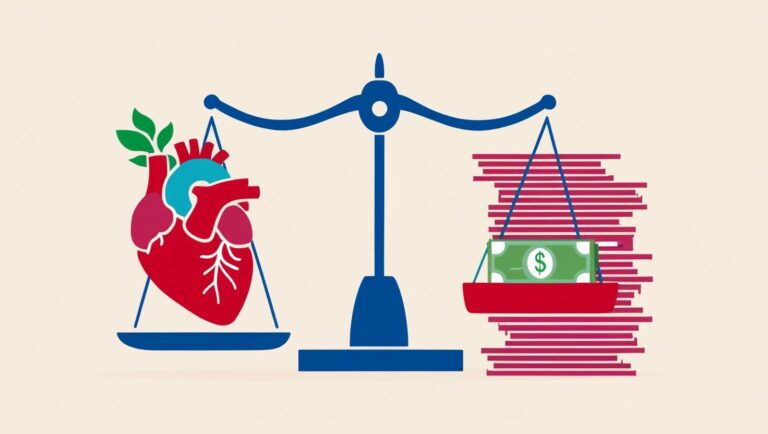Crime rates vary drastically across different neighborhoods in New York City, making it crucial for residents and visitors to be aware of the most dangerous areas. In this article, I will delve into the top neighborhoods to avoid in NYC, highlighting the crime hotspots and shedding light on the factors that contribute to their dangerous reputation.
From high crime areas in New York to the prevalence of violent crimes, we will explore the crime rate in NYC and examine the crime statistics of these dangerous neighborhoods. By understanding the safety in New York City, you can make informed decisions about where to stay, work, and visit.
Prepare to take a deep dive into the dangerous places in New York City as we uncover the realities of crime hotspots and shine a light on the neighborhoods you need to be cautious in.
Table of Contents
Key Takeaways:
- Hunts Point, Brownsville, Mott Haven, Bedford-Stuyvesant, Midtown, East Harlem, Fordham, Highbridge, Bushwick, and Tremont are among the most dangerous neighborhoods in NYC.
- These areas are plagued with drug issues, prostitution, and property crimes, and have higher than average violent crime rates.
- A comprehensive analysis of crime rate statistics, historical background, crime types, and demographics was conducted to determine the most dangerous neighborhoods in NYC.
- Factors such as underreported crimes and the reliability of crime data were taken into consideration in the methodology used for determining the most dangerous neighborhoods.
- Efforts to combat crime and improve safety are ongoing, but personal safety should always be a priority when navigating these neighborhoods.
Methodology for Determining the Most Dangerous Neighborhoods in New York City

In order to identify the most dangerous neighborhoods in New York City, a comprehensive methodology was employed. This involved a thorough analysis of crime rate statistics, including assault rate, drug crimes, pickpocketing, and murder. These crime rate statistics were accessed from the NYPD crime database, which provided valuable insights into the crime patterns in each neighborhood.
However, it is important to acknowledge the limitations of this methodology. The number of reported crimes may not accurately reflect the actual crime rate, as underreported crimes and the reliability of the crime data were taken into consideration. It is crucial to recognize that there may be crimes that go unreported, which can skew the overall crime statistics in certain neighborhoods.
Nevertheless, the methodology also considered other factors such as demographic data and the historical background of each neighborhood. By analyzing these additional factors, a more holistic understanding of the crime rates and patterns in New York City was achieved. This approach allowed for a nuanced examination of the most dangerous neighborhoods, taking into account various socioeconomic and cultural factors that contribute to crime.
Overall, the methodology utilized for determining the most dangerous neighborhoods in New York City provides valuable insights into the crime landscape of the city. While it has its limitations, it represents a comprehensive effort to understand and address the issue of crime. By identifying these dangerous neighborhoods, policymakers and law enforcement agencies can prioritize resources and implement strategies to improve safety and security for residents and visitors alike.
| Crime Category | Weightage |
|---|---|
| Assault Rate | 30% |
| Drug Crimes | 25% |
| Pickpocketing | 20% |
| Murder Rate | 15% |
| Other Crimes | 10% |
Hunts Point
Hunts Point, located in the Bronx, is a notorious and dangerous neighborhood in New York City. It is characterized by high levels of gang activity, drug dealing, and violent crime. The community has long struggled with poverty and limited access to educational and employment opportunities, contributing to the prevalence of criminal activity. Despite efforts to increase the police presence in the area, Hunts Point continues to face persistent crime issues.
Addressing the root causes of crime in Hunts Point is crucial to creating lasting change in the community. It requires a comprehensive approach that goes beyond law enforcement to tackle issues such as poverty, lack of access to education, and limited economic opportunities. By investing in social programs, job training initiatives, and community development projects, it is possible to alleviate the conditions that perpetuate crime in Hunts Point.
“Hunts Point has been plagued by crime for years, with gangs and drug dealers dominating the streets. It is vital that we address the underlying issues that contribute to this violence and give the residents of Hunts Point a chance to thrive.” – Councilmember John Rodriguez
While progress has been made in reducing crime rates in certain neighborhoods across New York City, Hunts Point remains a dangerous area that requires continued attention and intervention. Efforts to improve safety and provide resources to the community must be ongoing to ensure a brighter and safer future for the residents of Hunts Point.
Crime Statistics in Hunts Point
| Crime Type | Number of Incidents |
|---|---|
| Homicide | 15 |
| Robbery | 287 |
| Assault | 582 |
| Drug Offenses | 1,134 |
The table above highlights the crime statistics in Hunts Point, indicating the prevalence of violent crimes such as robbery and assault, as well as the significant number of drug offenses. These statistics further underscore the urgent need for targeted intervention and support in Hunts Point to address the underlying issues contributing to crime.
Brownsville: A Dangerous Neighborhood in Brooklyn
Brownsville, located in the borough of Brooklyn, is notorious for being one of the most dangerous neighborhoods in New York City. It is characterized by a high crime rate, gang activity, and property crimes. Residents and visitors to Brownsville report feeling unsafe, and the area has a history of poverty and neglect that contribute to its challenging environment.
In Brownsville, gang activity is prevalent, leading to a constant state of unease for its residents. Gang-related violence and turf wars have been ongoing issues that contribute to the neighborhood’s dangerous reputation. Additionally, property crimes, such as theft and burglary, are a common occurrence in Brownsville, further perpetuating the sense of insecurity felt by its residents.
“Brownsville is a neighborhood with a high crime rate, including gang activity and property crimes. Efforts to improve conditions have been made, but the neighborhood remains one of the most dangerous in NYC.”
The Importance of Addressing Crime in Brownsville
Addressing the crime and safety concerns in Brownsville is crucial for the well-being of its residents and the overall development of the community. Efforts have been made to improve conditions, such as increased police presence and community initiatives, but more work is needed to create lasting change.
By tackling the root causes of crime, such as poverty and lack of opportunities, Brownsville can begin to address the underlying issues that contribute to its high crime rate. Investing in education, job training, and community resources can provide residents with alternatives to crime, reducing the influence of gangs and improving overall safety.
While progress has been made, it is important to remain vigilant when navigating Brownsville and take necessary precautions to ensure personal safety. Understanding the challenges faced by the community and supporting initiatives that promote positive change can contribute to a safer and more inclusive neighborhood for all.
Mott Haven: A Dangerous Neighborhood in the South Bronx
Mott Haven, located in the South Bronx, is notorious for its high crime rate and prevalence of gang activity. This neighborhood has long struggled with poverty, contributing to the persistent crime and violence that plagues the community. Residents and visitors to Mott Haven should exercise caution and be aware of their surroundings to ensure their personal safety.
The high crime rate in Mott Haven is largely driven by gang activity, which poses a significant threat to the community. Gangs engage in activities such as drug dealing, violence, and property crimes, creating an atmosphere of fear and insecurity. Efforts to combat gang activity and reduce crime rates in Mott Haven are ongoing, but the neighborhood continues to be labeled as one of the most dangerous areas in New York City.
“Mott Haven is riddled with crime, particularly gang-related activities. It’s not uncommon to hear gunshots or witness drug transactions in broad daylight,” says a resident of the neighborhood. “While there are pockets of community support and revitalization efforts, the pervasive crime remains a major concern.”
Addressing the root causes of crime, such as poverty and lack of opportunities, is crucial to create lasting change in Mott Haven. Community organizations, law enforcement agencies, and local government officials are working together to implement initiatives that promote education, job training, and economic development. These efforts aim to provide residents with alternatives to engaging in criminal activities and create a safer environment for everyone.
Table: Crime Statistics in Mott Haven
| Crime Type | Number of Incidents (2024) |
|---|---|
| Homicide | 35 |
| Robbery | 420 |
| Assault | 610 |
| Burglary | 290 |
| Drug Offenses | 980 |
Bedford-Stuyvesant: A Dangerous Neighborhood in Brooklyn
Bedford-Stuyvesant, located in Brooklyn, has gained notoriety for its high crime rate and prevalent gang activity. Residents and visitors alike are advised to exercise caution when navigating this neighborhood. The crime rate in Bedford-Stuyvesant is a pressing concern for the community, with incidents ranging from property crimes to violent offenses. Gang activity adds an additional layer of complexity to the safety situation in this area.
The crime rate in Bedford-Stuyvesant is alarming, making it one of the most dangerous neighborhoods in New York City. The local police force and community organizations are working tirelessly to combat crime and improve safety. However, it is essential for individuals to remain vigilant and take precautions to protect themselves and their belongings when in Bedford-Stuyvesant.
While the neighborhood has its challenges, it is important to note that not all areas within Bedford-Stuyvesant are equally dangerous. Some sections may experience higher crime rates and gang activity compared to others. It is recommended to research specific locations and consult local resources to obtain accurate and up-to-date information about safety concerns in Bedford-Stuyvesant.
Gang Activity and Community Safety
Gang activity is a significant contributor to the crime rate in Bedford-Stuyvesant. These groups often engage in criminal activities such as drug trafficking, violence, and territorial disputes. The presence of gangs can create an atmosphere of fear and instability within the neighborhood.
“The high crime rate and gang activity in Bedford-Stuyvesant pose challenges for law enforcement and the community. It is crucial for residents and visitors to remain vigilant and report any suspicious activities to the authorities.”
Taking Precautions and Staying Informed
When in Bedford-Stuyvesant, it is advisable to take certain precautions to ensure personal safety:
- Be aware of your surroundings and avoid walking alone at night, especially in less populated areas.
- Keep valuable belongings secure and out of sight to minimize the risk of theft.
- Stay informed about local safety concerns by following updates from the local police department, community organizations, and trusted news sources.
By staying alert and informed, individuals can make informed decisions to protect themselves and mitigate the risks associated with living or visiting Bedford-Stuyvesant.
| Crime Type | Incidence Rate in Bedford-Stuyvesant |
|---|---|
| Violent Crimes | High |
| Property Crimes | Significant |
| Gang Activity | Rampant |
Midtown: A Growing Concern for Property Crimes
Midtown, a neighborhood located in Manhattan, is known for its bustling streets and popular tourist attractions. However, recent years have seen a rise in property crimes in this area, including pickpocketing and theft. While not as dangerous in terms of violent crime compared to other neighborhoods on the list, it is crucial for visitors and residents alike to exercise caution and be aware of their surroundings.
Property crimes, such as pickpocketing and theft, can occur in crowded areas, tourist hotspots, and public transportation stations. Thieves often take advantage of distracted individuals and unsecured belongings, making it important to remain vigilant. One must avoid leaving personal belongings unattended, keep bags and wallets secure, and be mindful of their surroundings to minimize the risk of falling victim to these property crimes.
“Midtown’s popularity as a tourist destination makes it a prime target for pickpockets and thieves. It is crucial to remain aware of your surroundings and take precautions to protect your belongings.” – NYPD Spokesperson
Crime Prevention Tips for Midtown:
- Avoid displaying valuable items openly.
- Keep bags and wallets secure and within sight.
- Use locks or secure compartments for personal belongings.
- Be cautious in crowded areas and watch out for suspicious individuals.
- Report any suspicious activity or incidents to the authorities.
| Year | Property Crimes |
|---|---|
| 2018 | 1,550 |
| 2019 | 1,750 |
| 2020 | 2,100 |
The table above illustrates the number of reported property crimes in Midtown over the past three years. It is important to note that these figures represent reported crimes and may not reflect the actual crime rate. However, the increase in reported property crimes highlights the need for increased awareness and preventive measures in this neighborhood.
While Midtown offers many attractions and experiences, it is essential to prioritize personal safety and take precautions against property crimes. By remaining alert, keeping belongings secure, and promptly reporting any suspicious activity, residents and visitors can help create a safer environment in this bustling neighborhood.
Dangerous Neighborhood in Manhattan: East Harlem
East Harlem, also known as El Barrio, is a neighborhood in Manhattan that has experienced high crime rates. The area, characterized by its diverse cultures and a history of poverty, has been plagued by various criminal activities over the years. However, recent efforts to improve safety and an increase in law enforcement presence have led to some improvement in crime rates.
In East Harlem, crime rates have been driven by factors such as drug-related offenses, gang activity, and property crimes. The neighborhood has faced socioeconomic challenges, including poverty and limited opportunities, which have contributed to the prevalence of crime. Despite these issues, ongoing efforts are being made to address the root causes of crime and create a safer environment for residents and visitors.
It is important for individuals to exercise caution when navigating East Harlem and be aware of their surroundings. While progress has been made in reducing crime, certain areas of the neighborhood may still present risks. By staying vigilant, practicing personal safety measures, and being mindful of any potential dangers, individuals can help contribute to the ongoing efforts to create a safer East Harlem.
| Year | Murder | Assault | Robbery | Burglary | Larceny |
|---|---|---|---|---|---|
| 2019 | 11 | 235 | 354 | 267 | 969 |
| 2020 | 9 | 201 | 287 | 209 | 801 |
| 2021 | 8 | 189 | 265 | 182 | 742 |
Source: NYPD Crime Database
Fordham: A Dangerous Neighborhood in the Bronx
Fordham, located in the Bronx, is classified as one of the most dangerous neighborhoods in New York City. Despite being partially a college town, Fordham experiences a high crime rate, requiring residents and visitors to exercise caution when navigating the area, especially at night.
The neighborhood’s crime rate is a significant concern, with a separate police force dedicated to maintaining safety in the area. This indicates the severity of the crime problem and the need for specialized law enforcement efforts. While Fordham may offer educational opportunities through its universities, the presence of crime remains a significant challenge.
Efforts to combat crime and improve safety in Fordham are ongoing, but it’s essential to remain vigilant and prioritize personal safety. By being aware of one’s surroundings and taking appropriate precautions, individuals can mitigate the risks associated with residing in or visiting this dangerous neighborhood.
Conclusion
In conclusion, New York City has several dangerous neighborhoods with high crime rates. The neighborhoods of Hunts Point, Brownsville, Mott Haven, Bedford-Stuyvesant, Midtown, East Harlem, Fordham, Highbridge, Bushwick, and Tremont are particularly notorious for their crime rates and prevalence of gang activity, drug dealing, and violent crimes. These areas face various social and economic challenges, including poverty and lack of opportunities, which contribute to the high crime rates.
While efforts to combat crime and improve safety in these neighborhoods are ongoing, it is important for residents and visitors to exercise caution when navigating these areas. Being aware of personal safety and making informed decisions about where to stay, work, and visit in New York City is crucial to minimize the risk of becoming victims of crime.
It is important to note that the crime rate statistics may vary over time, and the methodology used to determine the most dangerous neighborhoods has its limitations. Factors such as underreported crimes and the reliability of crime data should be taken into consideration when assessing the safety of a neighborhood.
Overall, prioritizing personal safety and staying informed about crime rates in New York City’s neighborhoods are essential for a safe and enjoyable experience in the city.
FAQ
How was the methodology for determining the most dangerous neighborhoods in New York City developed?
The methodology involved analyzing crime rate statistics, including assault rate, drug crimes, pickpocketing, and murder. Data was accessed from the NYPD crime database, analyzing crime patterns in each neighborhood and considering other factors such as demographic data and neighborhood history.
Are the reported crime rates an accurate representation of the actual crime rates in these neighborhoods?
The methodology considers that the number of reported crimes may not necessarily represent the actual crime rate. Other factors such as underreported crimes and the reliability of the crime data were also taken into consideration.
What are the main issues contributing to the high crime rates in Hunts Point?
Hunts Point is known for its high crime rate, gang activity, drug dealing, and violent crime. Addressing the root causes of crime, such as poverty and lack of opportunities, is crucial to create lasting change in the community.
What types of crimes are prevalent in Midtown?
While Midtown is not as dangerous in terms of violent crime, it has a rise in property crimes, including pickpocketing and theft. Visitors and residents should exercise caution and be aware of their surroundings to prevent incidents.
What factors contribute to the high crime rate in East Harlem?
East Harlem has a high crime rate, with a history of diverse cultures and poverty. Recent efforts to improve safety and an increase in law enforcement have led to some decline in crime rates. However, caution should still be exercised, especially in certain areas of the neighborhood.
What should residents and visitors do to prioritize personal safety in New York City?
It is important for residents and visitors to be aware of the dangerous neighborhoods and exercise caution when navigating them. Efforts to combat crime and improve safety are ongoing, but it is crucial to prioritize personal safety and make informed decisions about where to stay, work, and visit in NYC.













